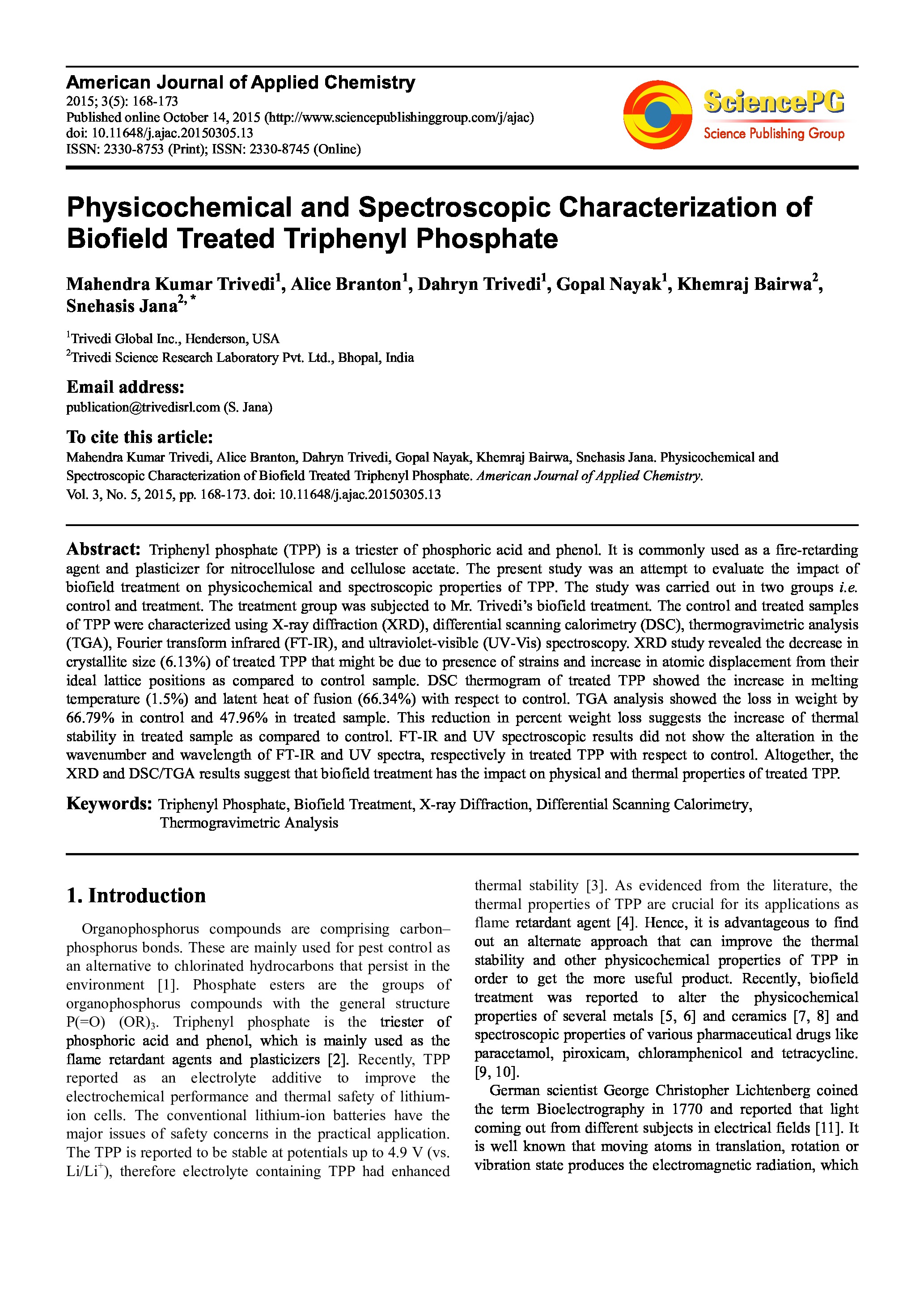Physicochemical and Spectroscopic Characterization of Biofield Treated Triphenyl Phosphate
Affiliation
Trivedi Global Inc.; Trivedi Science Research Laboratory Pvt. Ltd.
Main category
Natural Sciences (Analytical Chemistry, Method Development (Chemistr)
Abstract
Triphenyl phosphate (TPP) is a triester of phosphoric acid and phenol. It is commonly used as a fire-retarding agent and plasticizer for nitrocellulose and cellulose acetate. The present study was an attempt to evaluate the impact of biofield treatment on physicochemical and spectroscopic properties of TPP. The study was carried out in two groups i.e. control and treatment. The treatment group was subjected to Mr. Trivedi’s biofield treatment. The control and treated samples of TPP were characterized using X-ray diffraction (XRD), differential scanning calorimetry (DSC), thermogravimetric analysis (TGA), Fourier transform infrared (FT-IR), and ultraviolet-visible (UV-Vis) spectroscopy. XRD study revealed the decrease in crystallite size (6.13%) of treated TPP that might be due to presence of strains and increase in atomic displacement from their ideal lattice positions as compared to control sample. DSC thermogram of treated TPP showed the increase in melting temperature (1.5%) and latent heat of fusion (66.34%) with respect to control. TGA analysis showed the loss in weight by 66.79% in control and 47.96% in treated sample. This reduction in percent weight loss suggests the increase of thermal stability in treated sample as compared to control. FT-IR and UV spectroscopic results did not show the alteration in the wavenumber and wavelength of FT-IR and UV spectra, respectively in treated TPP with respect to control. Altogether, the XRD and DSC/TGA results suggest that biofield treatment has the impact on physical and thermal properties of treated TPP.
DOI
10.18147/smn.2016/paper:357
Do you have problems viewing the pdf-file? Download paper
here
If the paper contains inappropriate content, please
report the paper. You will be redirected to the landing page.
